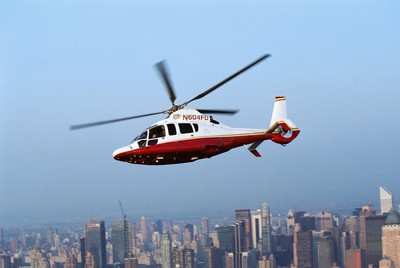Improved Acoustics, Less Internal And External Noise
 Eurocopter will open the door to
its development labs at this year’s Heli-Expo, showcasing
some of its flight proven innovation technologies.
“This year’s Heli-Expo will demonstrate how our new
technologies are being made ready for integration in
Eurocopter’s product line, allowing our helicopters to
outperform ever stricter and wider-ranging environmental and safety
requirements, but as well contributing to reducing operating and
maintenance costs,” stated Lutz Bertling, President and CEO
of Eurocopter. “These issues have top priority for us, and we
are responding with innovations that include more eco-efficient
engine concepts, revolutionary main rotor blade designs that reduce
noise and vibration, along with software and cockpit technologies -
combined with advanced training methods - to enhance
safety.”
Eurocopter will open the door to
its development labs at this year’s Heli-Expo, showcasing
some of its flight proven innovation technologies.
“This year’s Heli-Expo will demonstrate how our new
technologies are being made ready for integration in
Eurocopter’s product line, allowing our helicopters to
outperform ever stricter and wider-ranging environmental and safety
requirements, but as well contributing to reducing operating and
maintenance costs,” stated Lutz Bertling, President and CEO
of Eurocopter. “These issues have top priority for us, and we
are responding with innovations that include more eco-efficient
engine concepts, revolutionary main rotor blade designs that reduce
noise and vibration, along with software and cockpit technologies -
combined with advanced training methods - to enhance
safety.”
The aim of the bluecopter technology program is to develop and
validate advanced technologies which offer environmental benefits
for new Eurocopter aircraft. This includes improved acoustics for
lower noise inside the helicopter and externally, along with a
reduced C02 and NOx footprint of the helicopter over its life
cycle.
Eurocopter is displaying a new compact, high efficiency, high
compression two-stroke engine called the OPOC (Opposite Piston
Opposite Cylinder). This is in line with Eurocopter’s project
to fly with a light single-engine helicopter powered by a diesel
engine. The objective is to reach a power-to-weight ratio capable
of challenging the advantages of a classic turbine, with the OPOC
engine being one of the top options currently under evaluation.
The company is additionally pursuing several methods of
optimizing main rotors to reduce external noise and cabin
vibrations with the goal of introducing them as soon as feasible on
the company’s helicopters. One way is to change the shape of
the blade, using a technology called Blue Edge. The other is to
integrate “intelligent” piezoelectric actuators into
the trailing edge of the blade with a technology designated Blue
Pulse. The Blue Edge main rotor blade provides a passive reduction
in noise levels, using a double-swept shape that is very different
from present-day blades. The aim of this program is to reduce the
noise generated by so-called blade-vortex interactions (BVI), which
occur when a blade impacts a vortex, created at the tip of the
blade of any helicopter.
A five-blade Blue Edge main rotor has been flying since July
2007 on an EC155 testbed, logging 75 flight hours and demonstrating
noise reductions of 3 to 4 dB, as well as very good performance of
the blade. With this safe and simple means of measureable noise
reduction for helicopters now validated, Eurocopter is ready to
move Blue Edge into production applications.

EC155 File Photo
The piezo-active Blue Pulse rotor control system has the primary
objective of reducing noise levels generated by the interference of
the rotor blade tip vortices from one rotor blade with the
following blades. In addition, it will significantly reduce
vibrations within the helicopter airframe, increasing passenger
comfort and extending the service life of sensitive components, The
control system uses three flap modules located at the trailing edge
of each rotor blade. The blades’ piezoelectric actuators move
the rotor flaps 15 to 40 times per second in order to completely
neutralize the “slap noise” typically associated with
helicopters during descent. The Blue Pulse technology has been
flying since 2005, showing a noise reduction of up to 5 dB.
Eurocopter’s evaluations with Blue Pulse are continuing on an
EC145, while the development of a miniaturized system for
production applications is advanced.
Eurocopter is also demonstrating a Pilot Assistance System
(PILAS) which utilizes a synthetic vision system that displays all
relevant information for terrain, obstacles, air traffic, weather
and airspace use, and other training and safety devices.
 Classic Aero-TV: The Switchblade Flying Car FLIES!
Classic Aero-TV: The Switchblade Flying Car FLIES! ANN FAQ: Q&A 101
ANN FAQ: Q&A 101 ANN's Daily Aero-Term (04.12.24): Discrete Code
ANN's Daily Aero-Term (04.12.24): Discrete Code ANN's Daily Aero-Term (04.13.24): Beyond Visual Line Of Sight (BVLOS)
ANN's Daily Aero-Term (04.13.24): Beyond Visual Line Of Sight (BVLOS) ANN's Daily Aero-Linx (04.13.24)
ANN's Daily Aero-Linx (04.13.24)



